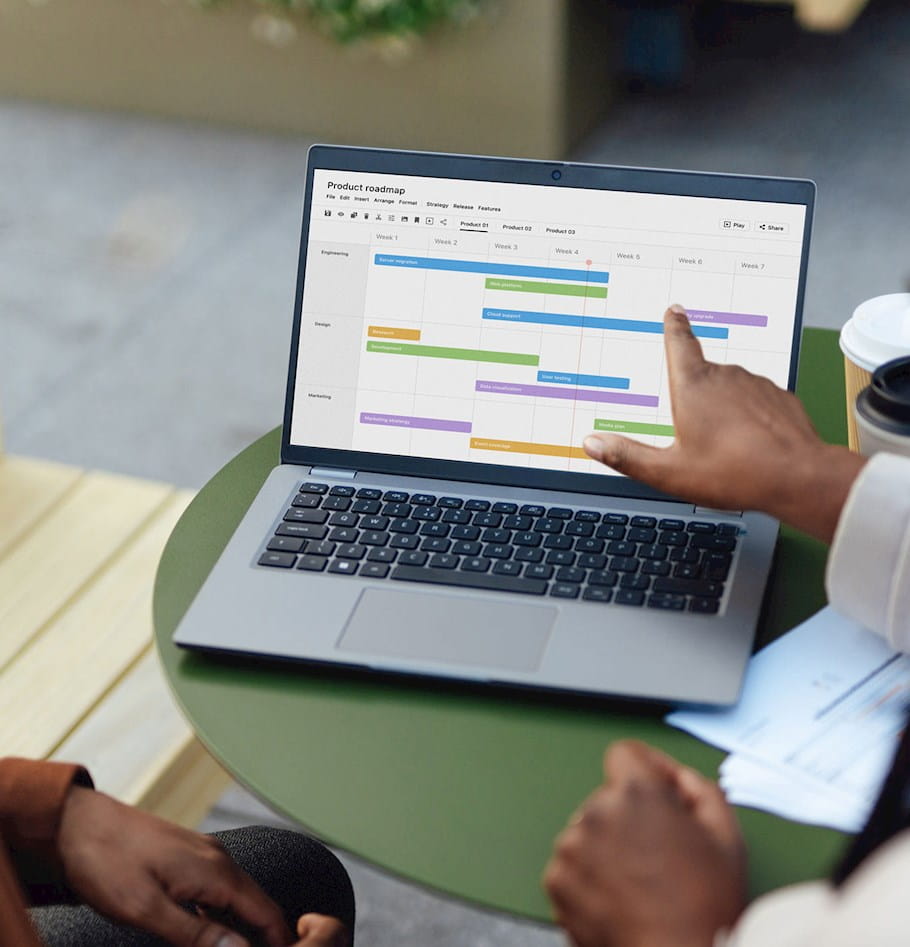How Increasing Costs of Water are Impacting Utilities and their Customers
As water prices continue to grow, low-income households are struggling to keep up. Utilities have the ability to step in and help.
U.S. residential water prices have grown an average of 5.5% per year since 2012—faster than inflation and the cost of goods like food and gasoline—with average residential monthly bills rising by nearly 50%. While rate increases are important tools to fund infrastructure upgrades and provide emergency services, these rate increases are taking up disproportionate shares of low-income household budgets.
Homes that pay larger portions of their income to water bills are often at greater risk for a water shutoff, or worse. Even though local governments and advocacy groups are overturning the practice, in some areas a small, unpaid water bill can send a home into a tax sale.
While water utilities are tasked with delivering safe, high-quality water at an affordable price point, COVID-19 added an additional challenge—increasing accounts receivable and bad debt. A recent survey published by Pew Research Center identified that since February 2020, nearly half of low-income respondents and 20% of middle-income respondents reported trouble paying bills.
Disconnect moratoria prevented utilities from penalizing missed or late bills, ensuring continued water service for everyone, as past-due balances rose across the industry throughout the summer. As the pandemic continues into 2021, it’s paramount for utilities to think about how to support low-income customers as bill debt and missed payments is damaging to both parties.
What we learned from COVID-19
While regulatory bodies across the country have responded to the pandemic by providing utility debt relief funding to customers in need, this response has been mainly geared toward electric and gas customers. The CARES Act set aside $900 million in additional Low-Income Home Energy Assistance Program (LIHEAP) federal funding through September 2021 but excludes water from payment assistance.
Many state commissions have instituted state-specific water-debt relief plans to help their customers. For example, Virginia recently setup the COVID-19 Municipal Utility Relief Program using $120 million in CARES Act funds and will allocate $60 million to water bill relief. Other cities like Detroit have extended shutoff moratoria until 2022. While these protections and financial support programs are in place, it’s imperative that utilities leverage policy opportunities, smarter rate design, and innovative programming to address the rising cost of water and rising debt for low-income individuals and families.
Current state of federal and local water policy
In California, water debt climbed to about $1 billion in 2020 and is growing by $100 million each month. A recent survey from the state’s water regulator estimates that 12% of households are behind on their water bills with an average debt of $500, and many are at risk of losing service. With monthly water bill costs increasing and millions of people losing their job due to the pandemic, it’s likely that the number of people facing water disconnects will continue to rise.
In 2019, a proposed low-income assistance bill (Low-Income Water Customer Assistance Programs Act, “LIWCAP”) was introduced to the Senate committee of Environment and Public works. The policy aimed to aid low-income households with their water bills, including wastewater, drinking water, and stormwater, or a combination of these services, through pilot programs.
LIWCAP would also mandate that the Environmental Protection Agency (EPA) research the current state of accessibility to affordable water services. The program would be an important transition for federal water policy as the focus shifts from regulation to affordability, but as of now LIWCAP has not progressed and its future remains uncertain.
Keystone water policies include the Clean Water Act (CWA) and the Safe Drinking Water Act (SDWA). Both policies were created to establish regulations for consumer safety. While these acts set important safety regulations, neither establish affordability standards to ensure low-income customers can equitably pay for water services. However, with the new administration water affordability and accessibility may become a forefront of environmental policy. President Biden’s Environmental Justice plan contains policies that promote water affordability through state funds and the Rural Utility Service.

With no current federal equivalent to LIHEAP, water utilities and municipalities have created their own assistance programs and policies. Some utilities offer other temporary assistance programs funded through “round-up” programs. Round-up programs generate revenue from voluntary donations from customers or employees, who elect to round up their water bill. Charleston Water System rounds bills up to the nearest dollar and round-up amount sum is donated to two charities assisting low-income customers with water bills.
States have also begun to introduce water affordability legislation to fill the gap by lacking federal policies and to pressure utilities in assisting low-income customers. Cal Water created the Low-Income Rate Assistance (LIRA) program, which allows customers who meet income criteria to receive bill discounts for monthly services. The City of Chicago’s assistance program, Utility Billing Relief (UBR), assists low-income customers by providing reduced water and sewer rates and offers debt relief for customers who pay their bills for one year.
This spring, Chicago’s City Council called on the U.S. Congress to enact and fund national affordability program modeled after LIHEAP. The Illinois Black Caucus introduced a new bill to the Illinois General Assembly which outlines using water burden—a metric used to assess utility affordability by calculating the percentage of income spent on a household’s water bill—as a measure to administer assistance dollars. This bill uses a progressive definition of water burden that helps to shape a comprehensive low-income water assistance policy that incorporates financial assistance for water efficiency, lead service line replacement, and clean water access.
While a federal water affordability program is needed to take the burden off utilities, government officials and policy makers need to consider the diversity of the communities they serve. An affordable water policy should incorporate the local and regional factors such as water use and supply, current state of water infrastructure, socio-demographic characteristics, customer base size, and vulnerability to climate change.
Leveraging rate design to empower low-income customers
Utilities can leverage rate design to empower low-income customers with equitable water rates that relieve excessive water burden. Customers of the utility could be paying the same amount for their bill, but the percentage of their income that goes toward the bill could be much larger than other customers. Water burden is a key metric to consider when designing rate structures for water utilities.
A uniform rate structure allows customers in the same customer class to pay the same unit price, usually $/CCF (100 cubic feet), while tiered rates provide structured price increases that have the lowest rates for critical service, increases for discretionary use like irrigation, and decreases for large C&I customers.
However, a flat fee rate structure correlates to one price per billing period for unlimited water usage, which could limit low-income customers’ control over their bill as they may end up paying for other’s non-essential water usage. If other homes are using water to fill pools or irrigate yards, this would force everyone’s flat fee to increase, inequitably increasing low-income homes’ water bills. The uniform and tiered rate structures allow customers to pay for exactly what they use, only essential water usage for most low-income customers, and not be subject to paying a higher amount due to the other customers in their surrounding area.
Other rate issues disproportionately affect low-income customers negatively, such as infrastructure upgrades, maintenance, and flat fees, which could include service charges or connection fees. Areas where low-income residents live usually correspond to areas with the highest need for infrastructure upgrades due to aging pipes, leaks requiring maintenance attention, and software and treatment upgrades. These non-water bill components cause low-income customers to be subject to disproportional rate increases due to where they live and the utilities lack of upkeep in these areas.
An example of a utility leveraging rate structure design to assist low-income customers is the Philadelphia Water Department’s Tiered Assistance Program (TAP). This program sets monthly customer water bills as a percentage of pre-taxed household income. A household making 0-50% of the poverty line will pay 2% of monthly income for the water bill, between 51-100% will pay 2.5% of monthly income, and between 101-150% will pay 3%; the minimum bill is $12 per month. Using water burden to provide low-income customers with an equitable rate structure, leads to less delinquent customers and more engagement with water utility programming.
Innovative program design to overcome regulatory and state barriers
The design of low-income programs can be challenging, but it also opens opportunities for creativity and innovation. Some programs are limited by state legislatures or enrollment barriers, which reduces a utility’s reach to customers. The following four examples highlight some of the various program structures used in industry today, how customers can register, and barriers that come with these options.
Orange Water & Sewer Authority (OWASA)
Orange Water & Sewer Authority (OWASA) offers the Care to Share program that allows customers to donate to a fund, organized by a local non-profit, that is distributed to neighbors in need. North Carolina prohibits utilities from charging customer different rates, which can be a significant pain point for utilities looking to assist low-income customers, so local non-profits must step up to help collect and distribute funds.
The city of Atlanta
The city of Atlanta offers the Care & Conserve program that includes bill payment and plumbing repair assistance and is funded through voluntary customer contributions, corporate donations, and grants set aside by the city. Customers must submit supporting documents, such as paychecks and social security benefit letters to be eligible for the program. These barriers can cause customers to not participate due to the sensitivity of these documents and the possibility of limited access to such forms.
American Water of Pennsylvania
American Water of Pennsylvania offers the H20: Help to Others program which grants up to $1,000/yr for a household’s water bills, an 85% discount on monthly water service fees, a 20% discount on total wastewater charges, and water saving devices and education to promote conservation. This program is funded through corporate donations and customers must have an annual household income at or below 200% of the federal poverty line to qualify for a grant or 150% to qualify for the discount program.
San Jose Water
San Jose Water offers their Water Rate Assistance Program (WRAP) that provides eligible low-income customers, based on household size and gross annual income, a 15% discount on the total water bill. In order to fund this program, SJW has implemented a monthly surcharge of $1.75 to all customers who are not participates of WRAP.
These programs highlight good design tactics such as: non-profit organizations that distribute funds, plumbing repair assistance to promote water conservation, customer choice for grant or discount programs, and flat discounts funded through customer surcharges. However, these programs have fundamental barriers such as enrollment documentation and regulatory constraints and do not address the fundamental challenge of water affordability and rate equity.
Best practices: Water utility maturity model for low-income assistance programs
While water disconnect moratoria are in place and more federal funding is being made available to water utilities to support their customers, utilities of every size must find a sustainable, long-term solution to address water affordability for low-income customers. A maturity model can help utilities identify their current state and ideal future state through planning in six areas: strategy, business process, technology, reporting and analytics, people, and communications. A robust, and well-executed customer assistance strategy can:
- Increase revenue and funding
- Increase access to utility resources and water efficiency programs
- Decrease the amount of delinquent customers
- Enhance community development
- Strategy
- Business Process
- Technology
- Reporting & Analytics
- People
- Communications
Developing: Lack of strategy for managing processes with third-party payers and social agencies
Foundational: Ad-hoc programs to support customer assistance
Advanced: Robust strategy for managing processes and programs with third-party payers and social agencies
Optimized: Defined ownership of processes, programs and funding to develop collaboration and partnership with agencies
Developing: No defined process(es) for managing third-party payers and social agencies
Foundational: Multiple, ad-hoc processes varying by third-party payer and agency
Advanced: Streamlined processes for managing all third-party payers and social agencies
Optimized: Optimized and cross-functional processes for managing all third-party payers and social agencies
Developing: Minimal technology support for managing third party payers and social agencies
Foundational: Traditional technology systems to support a customer’s journey (e.g. Contact Center, IVR)
Advanced: Streamlined technology systems for preferred customer journey (e.g. mobile app, portal)
Optimized: Streamlined technology systems with enabled real-time customer data validation, based on preferred journey for customers and agencies
Developing: Basic reporting or analytics on third-party payers and social agencies management or allocation
Foundational: Reporting and analytics on high-impact third-party payers and at-risk customers
Advanced: Reporting and analytics, specifically comparing to local utilities and other similar-sized utilities
Optimized: Proactive reporting and analytics to identify and reach out to at-risk customers
Developing: Lack of employee resources dedicated to third-party payers and social agencies management
Foundational: A single employee-owner of third-party payers and social agencies management
Advanced: Numerous agencies and utilities interact consistently and are dedicated to customer assistance
Optimized: A common forum for agencies and utilities, third-party administration of funds and full participation of utility and agencies
Developing: Minimal communications on the processes between third-party payers and social agencies
Foundational: Reactive communications on the processes between third-party payers and social agencies available by phone and on the web
Advanced: Proactive, targeted communications (e.g. bill inserts) on the processes between third-party payers and social agencies
Optimized: Adopted, highly visible program communications within the local community on the processes between third-party payers and social agencies
Conclusion
There is ample opportunity in the water space for utilities to rethink and redesign their current programs. Fundamental challenges in the water utility industry have been brought to the surface during the pandemic. These challenges include limited government funding (both federal and local), national water affordability policy, unequitable rate design, and barriers to use of assistance funds.
This opportunity can position utilities to take charge of the communities they serve by assisting their low-income customers while at the same time, reducing debt and delinquency of customers. Addressing the water burden issue on utilities’ low-income customers will not only improve their customer’s well-being but will also improve the well-being of the utility.



